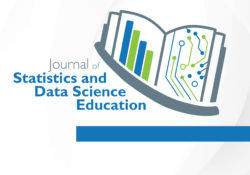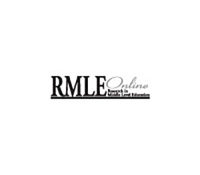eric.ed.gov har udgivet: A national survey examined the following: the extent of math-related activities in adult literacy programs, staff training in math, assessment frameworks being used, and the use of computers for teaching math. Of the 605 programs that received the questionnaire, 350 (57.9%) completed questionnaires. The 350 programs served more than 750,000 adult students in 1992-1993. Among the key findings of the study were the following: (1) although more than 80% of adult literacy students receive math-related instruction, less than 5% of their teachers are certified to teach math; (2) the math skills of adult literacy students are usually assessed by standardized tests that do not adequately cover many of the math skills required in new curricular frameworks or high-performance workplaces; and (3) although more than 75% of adult… Continue Reading →
Like this:
Like Loading...
eric.ed.gov har udgivet: This paper aims to provide a reflective overview of the curriculum developments in teacher education for Scotland in the Division of Technology, Department of Maths, Science and Technology Education, University of Strathclyde. A course in technology must by its very nature be frequently updated and reviewed if it is to be considered to be pertinent and relevant. This paper aims to gauge the design and technological confidence and developing capability of students. Two cohorts have completed the first two years of the four-year degree course, B.Ed Design and Technology. As the third cohort begins, progress to date is considered. The question is asked: Does the course educate for technological literacy and provide students with the creativity to educate for technological literacy with perspective, sensitivity, creativity, and confidence?… Continue Reading →
Like this:
Like Loading...
tandfonline.com har udgivet en rapport under søgningen “Teacher Education Mathematics”: Abstract Abstract The novel coronavirus has forced the world to interact with data visualizations in order to make decisions at the individual level that have, sometimes, grave consequences. As a result, the lack of statistical literacy among the general public, as well as organizations that have a responsibility to share accurate, clear, and timely information with the general public, has resulted in widespread (mis)representations and (mis)interpretations. In this article, we showcase examples of how data related to the COVID-19 pandemic has been (mis)represented in the media and by governmental agencies and discuss plausible reasons why it has been (mis)represented. We then build on these examples to draw connections to how they could be used to enhance statistics teaching and learning,… Continue Reading →
Like this:
Like Loading...
eric.ed.gov har udgivet: This brief presents findings from a study on Urban Advantage (UA), a collaboration between the American Museum of Natural History (AMNH), other New York City informal science institutions, and the New York City Department of Education (NYCDOE) to improve the science literacy of NYC public school students. The analysis draws on a rich longitudinal database, containing student- and school-level data for all NYC public schools and students from 2004-05 to 2009-10. Results indicate that these collaborations can have a positive impact on student achievement and science learning. Key findings include: (1) Students at UA schools outperform students at non-UA schools. In 2006- 07, the third year of the program, 44.2% of students at UA schools are proficient on the Intermediate Level Science Test (ILS) exam, compared to… Continue Reading →
Like this:
Like Loading...
tandfonline.com har udgivet en rapport under søgningen “Teacher Education Mathematics”: ABSTRACT Formulae display:?Mathematical formulae have been encoded as MathML and are displayed in this HTML version using MathJax in order to improve their display. Uncheck the box to turn MathJax off. This feature requires Javascript. Click on a formula to zoom. ABSTRACT Background: Knowledge of quantum computing is arguably inaccessible to many, with knowledge of the complex mathematics involving a particular barrier to entry, creating difficulty in terms of teaching and inclusive learning for those without a high level of mathematics. Meanwhile, it is increasingly important that the knowledge of quantum technologies is accessible to those who work with real-world applications and is taught to the younger generation. Purpose: Resulting from collaborative dialogue between physicists, computer scientists, educationalists, and industrial… Continue Reading →
Like this:
Like Loading...
eric.ed.gov har udgivet: This is the second in a series of briefs summarizing findings from the newest and most rigorous research related to racial and socioeconomic diversity in public schools. The studies on which this brief is based were published recently in three special issues of the peer-reviewed journal, “Teachers College Record,” edited by Professors Roslyn Arlin Mickelson of the University of North Carolina at Charlotte and Kathryn Borman of the University of South Florida. This brief considers the relationship between the racial and socioeconomic composition of a school and/or classroom and a variety of important educational measures. This research augments an already extensive body of work in this area, which has reached similar conclusions. However, the work published this year in “Teachers College Record” is particularly rigorous. It draws… Continue Reading →
Like this:
Like Loading...
tandfonline.com har udgivet en rapport under søgningen “Teacher Education Mathematics”: Abstract Abstract Inequitable learning opportunities are a leading contributor to the persistent literacy achievement gaps evident between historically marginalized students and their more affluent peers. This study investigated the impact of a community school reform effort in an urban middle school. The community school initiative focused on meeting the complex academic and non-academic needs of newcomer (i.e., immigrant and refugee) students and families. The researchers compared the community school students to a propensity score-matched group and found that the community school students significantly outperformed the comparison group in English language arts (ELA) from Grade 6 to 8 and had significantly fewer course failures in Grade 8. Results of this study also indicate the promising contributions community school wrap-around services lend… Continue Reading →
Like this:
Like Loading...
tandfonline.com har udgivet en rapport under søgningen “Teacher Education Mathematics”: Abstract Formulae display:?Mathematical formulae have been encoded as MathML and are displayed in this HTML version using MathJax in order to improve their display. Uncheck the box to turn MathJax off. This feature requires Javascript. Click on a formula to zoom. Abstract The main focus of this study was the role of attention in children with dyslexia (n = 137), who participated in a literacy-remediation program. Prior to and during four assessment moments (pretest and follow-ups 1–3), the attentional skill was assessed using the Attention Concentration Test (ACT). The ACT provides two measures for attentional skill, namely, working speed and distraction time. Working speed, unlike distraction time, was related to word and text decoding, and spelling (i.e., literacy level). Children who had… Continue Reading →
Like this:
Like Loading...
eric.ed.gov har udgivet: This document presents the evaluation results for the Title VII Special Alternative Instructional Program grant to Cicero Public School District 99 (Illinois) for the 1994-95 school year. This was the third year of funding and implementation of this grant, which provided summer school funds with emphasis in building literacy through the use of mathematics and science. A program director, 18 teachers, and 5 staff members served 180 students in grades 3 through 6 in the evaluation year. In the course of the evaluation, several on-site visits were made, and many pieces of additional data were analyzed. The program was designed to increase literacy development for students who have achieved some oral proficiency in English and are designated Limited English Proficiency (LEP). A dual purpose was to increase… Continue Reading →
Like this:
Like Loading...
eric.ed.gov har udgivet: Certain aspects of the implementation of language immersion programs in Delaware are unique given the state’s size, demographics, and role in national education initiatives including Race to the Top, Common Core, and Smarter Balance. The Delaware experience typifies what every state, district, or even school goes through as they try to provide students with more intensive, longer sequences of language learning that lead to high levels of proficiency. The state exports products to more than 160 different countries each year, cities across the state participate in 6 Sister City Partnerships, and Delaware regularly sponsors Trade Missions to locations including China, Germany, Italy, and even Pakistan. Residents in the state speak more than 80 languages combined. The Department of Education has Memoranda of Understanding in place with 9… Continue Reading →
Like this:
Like Loading...



